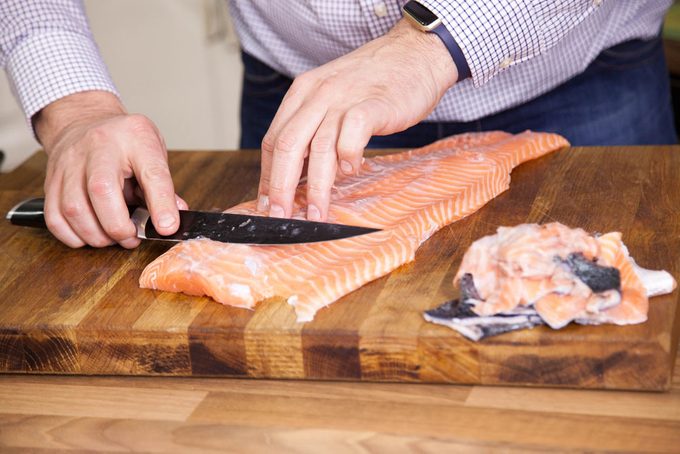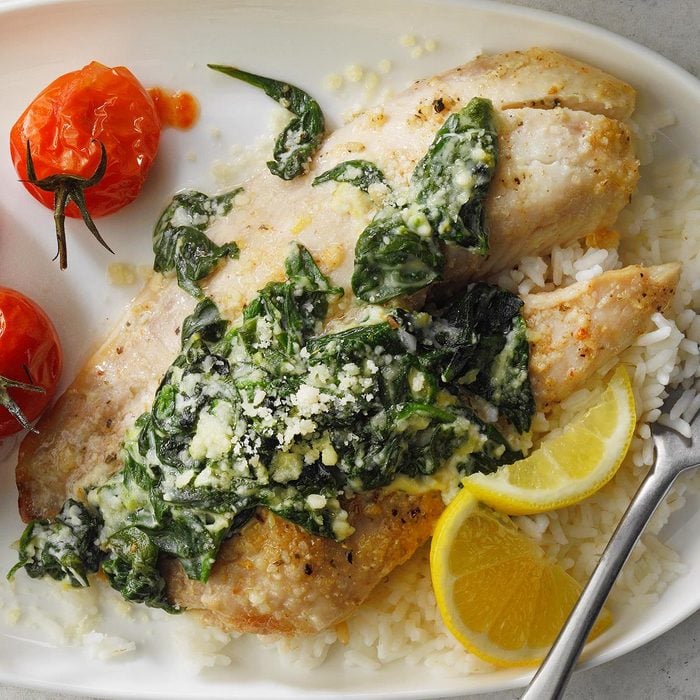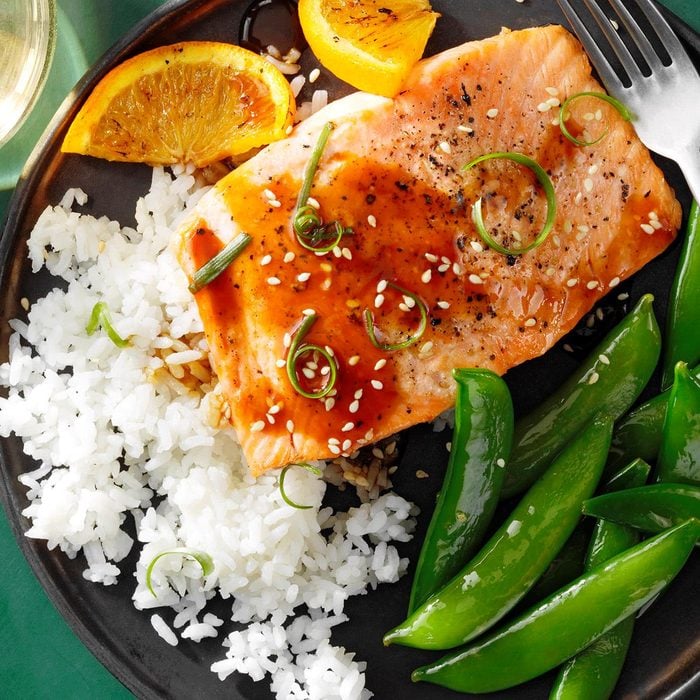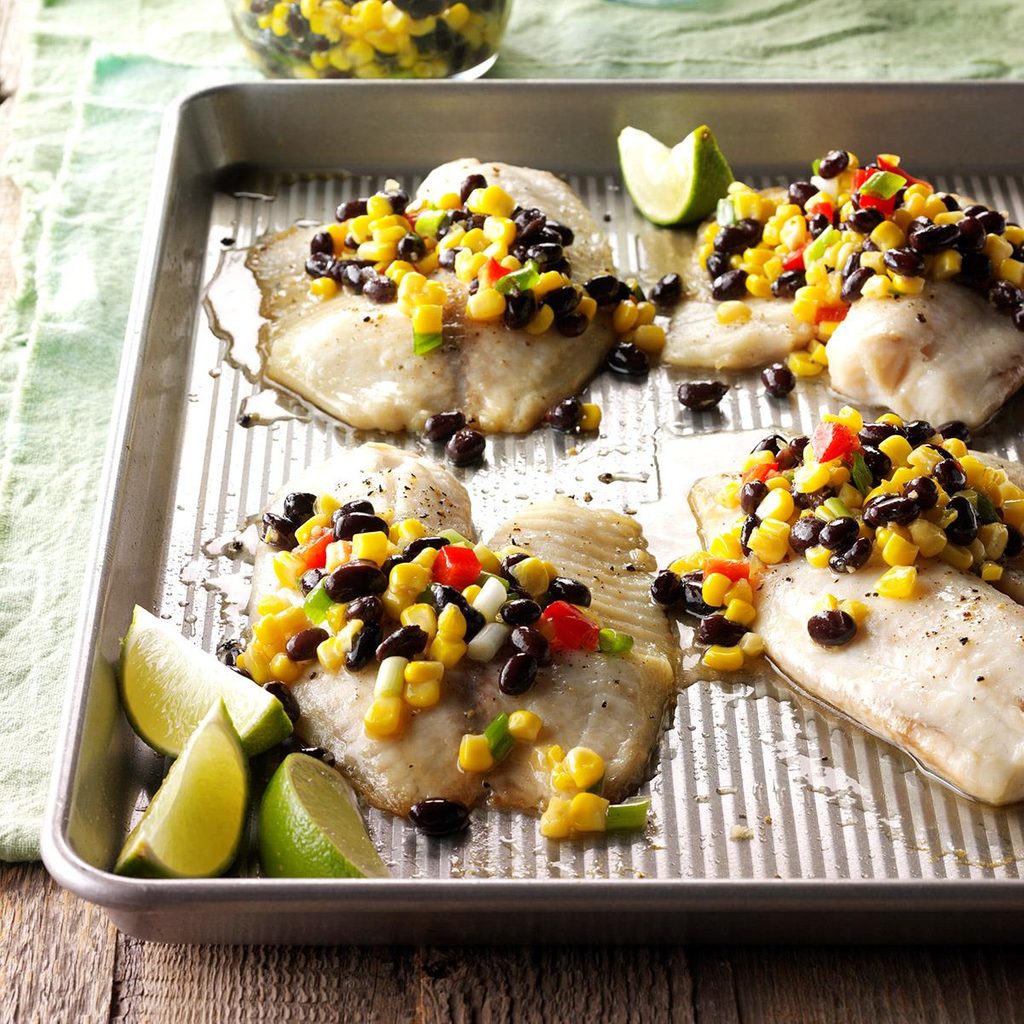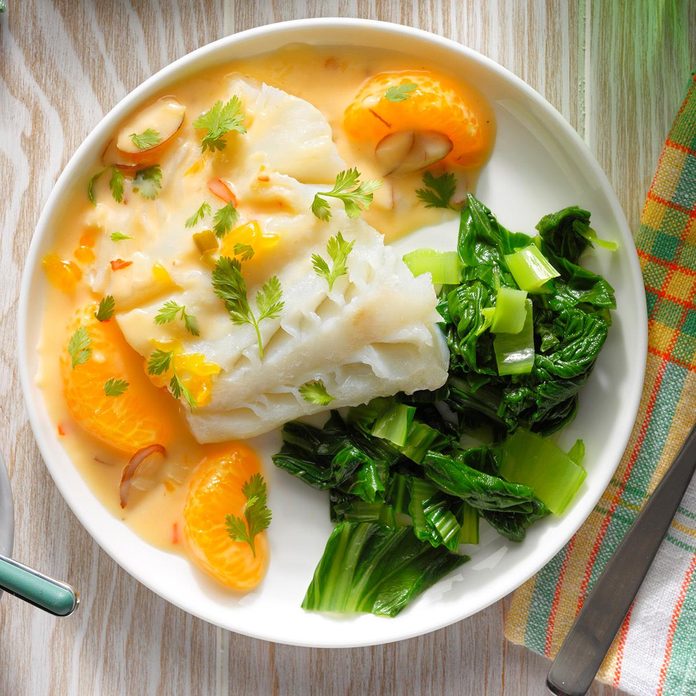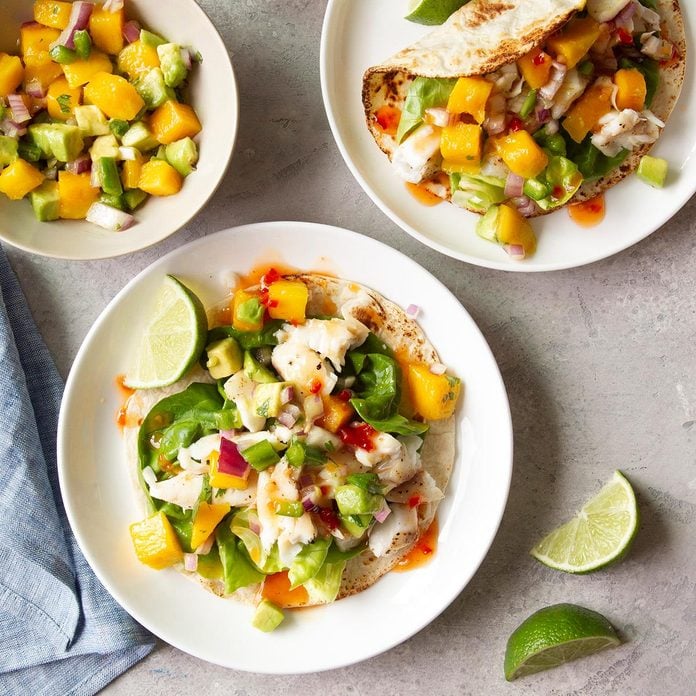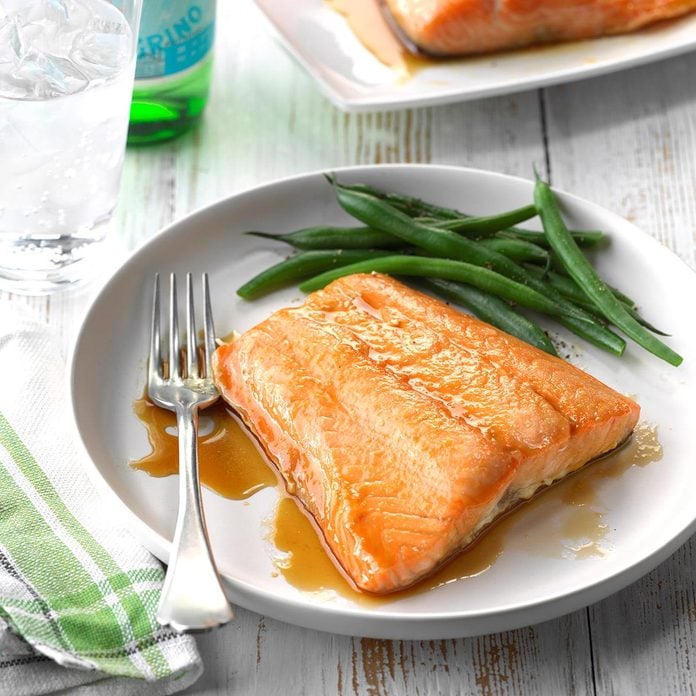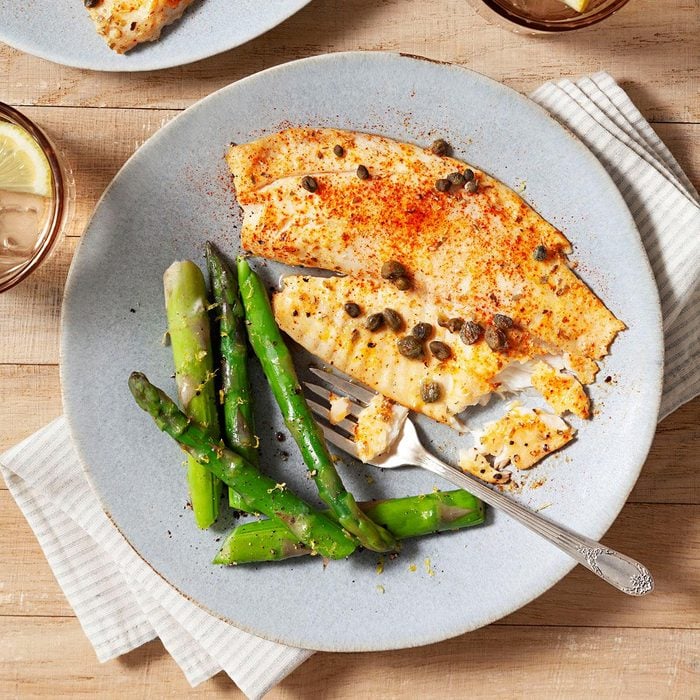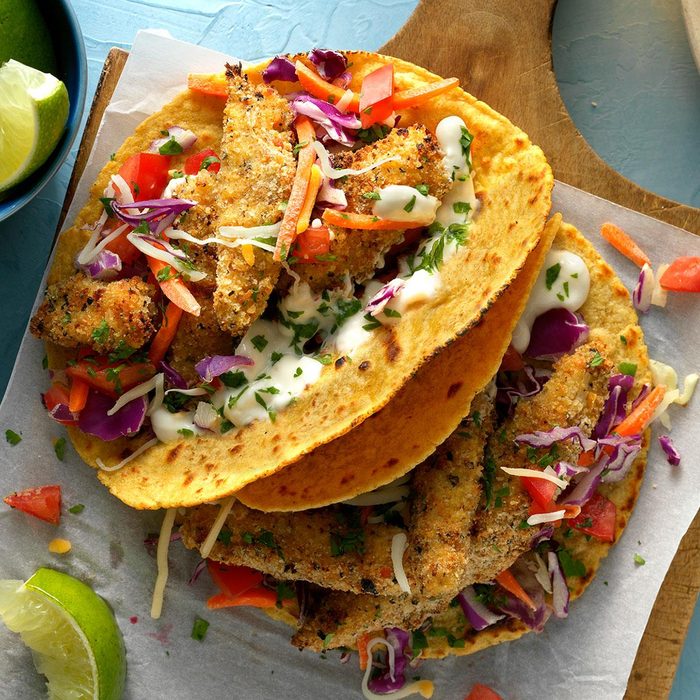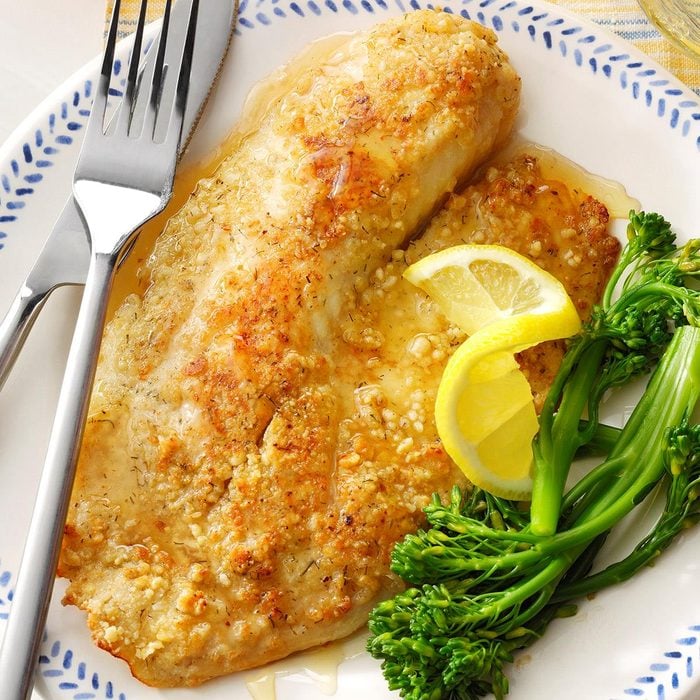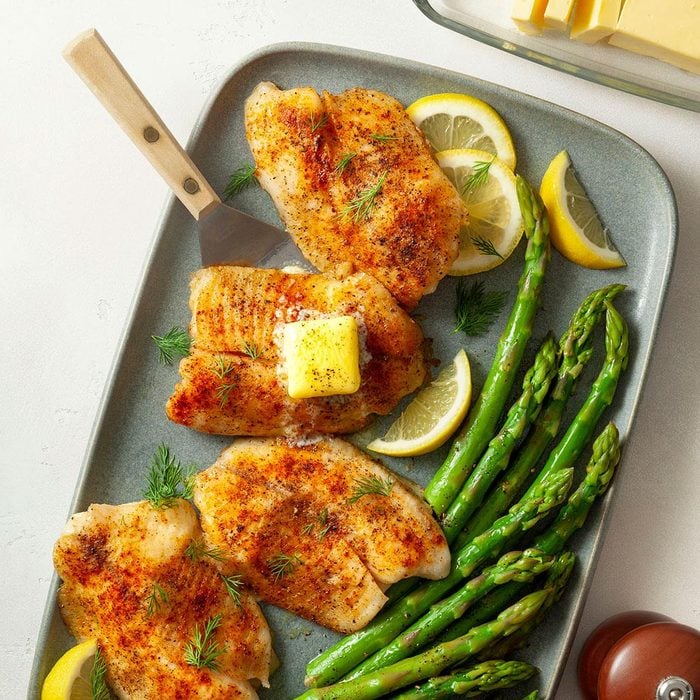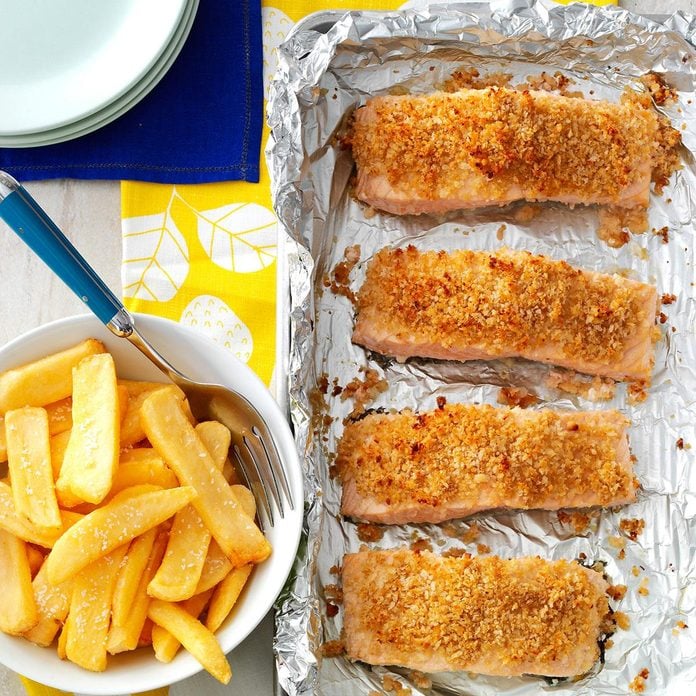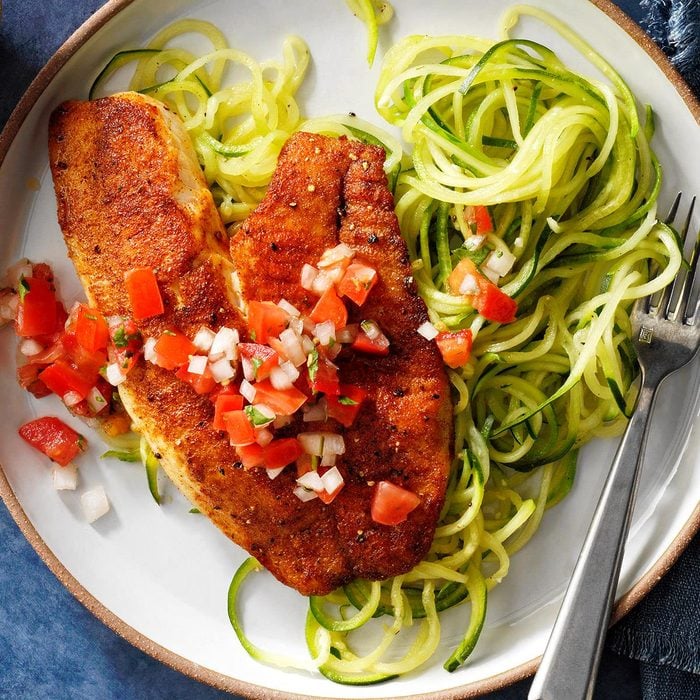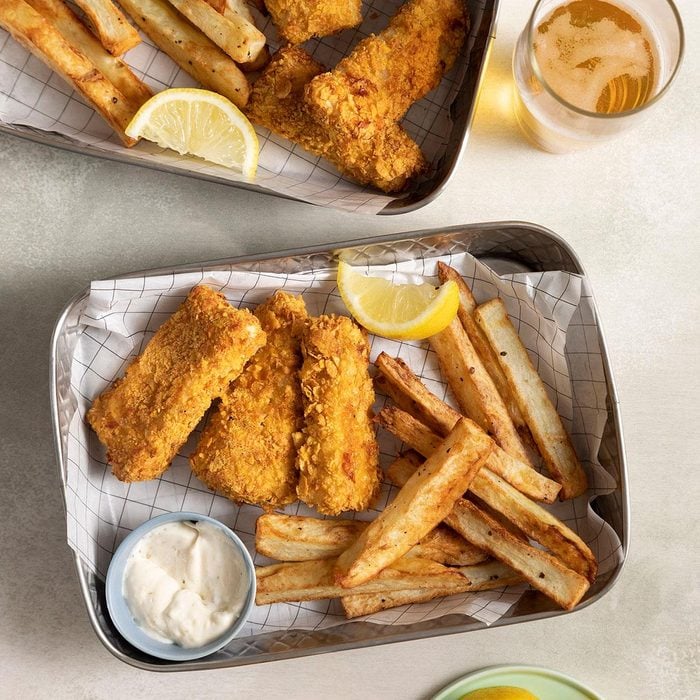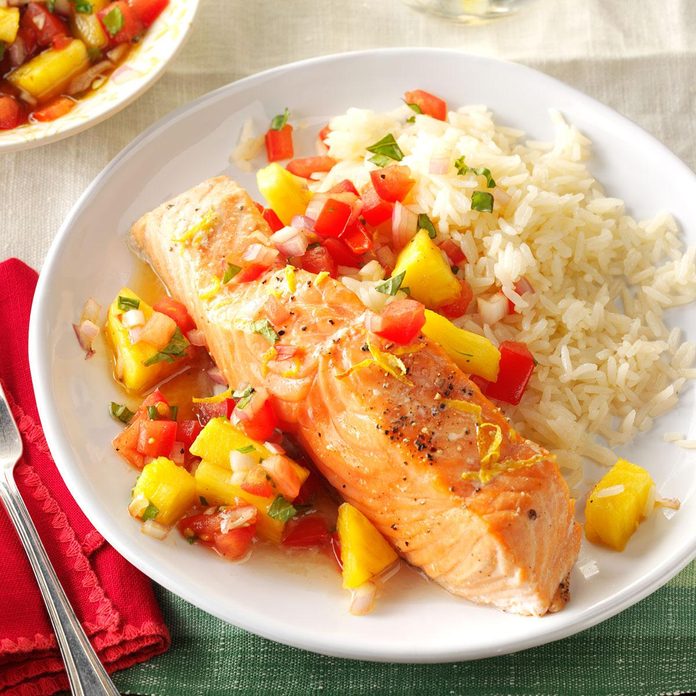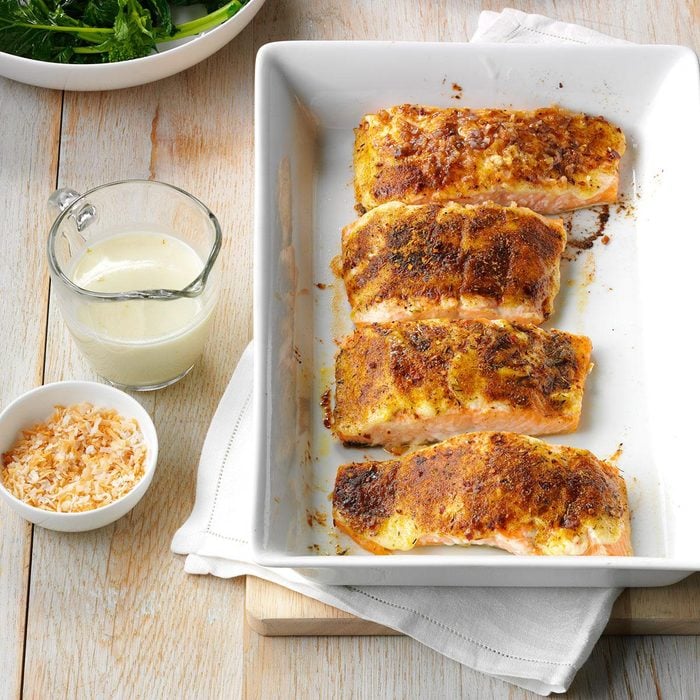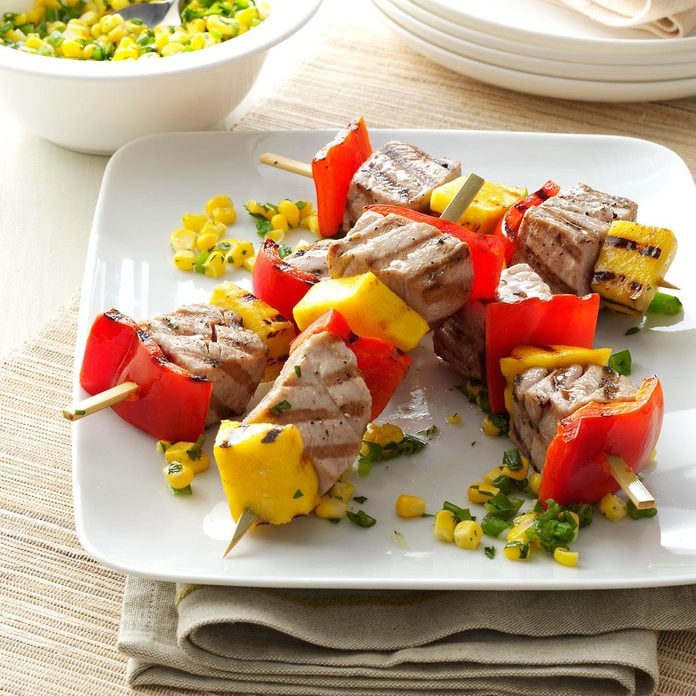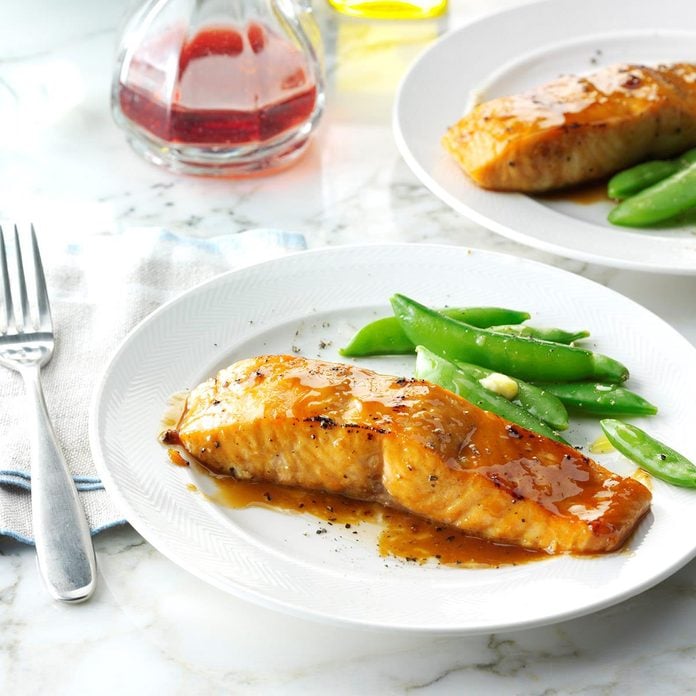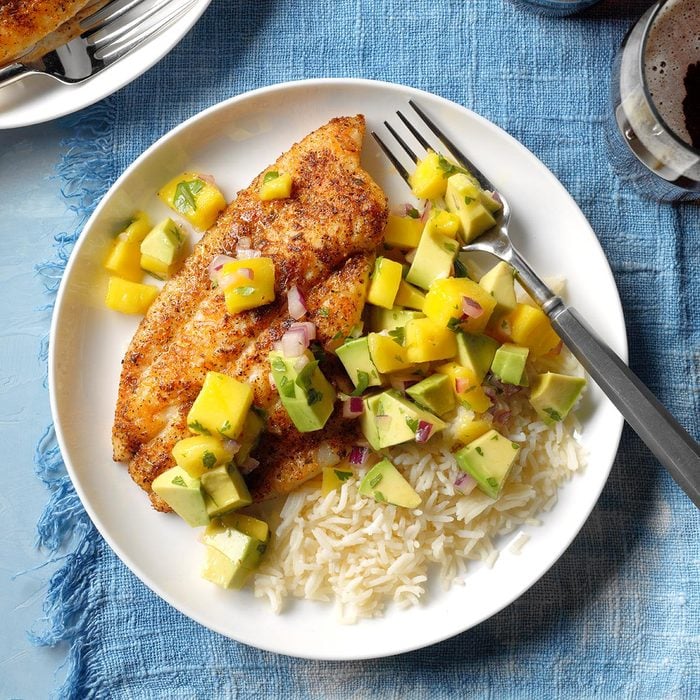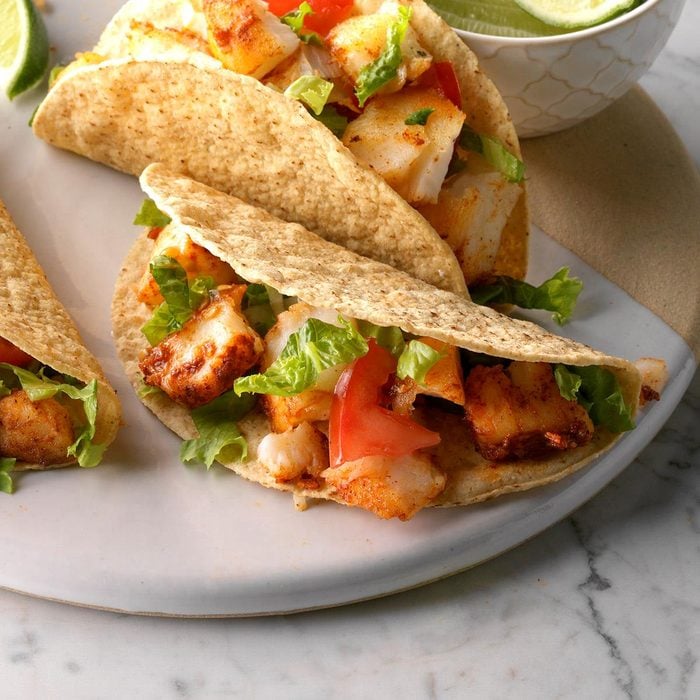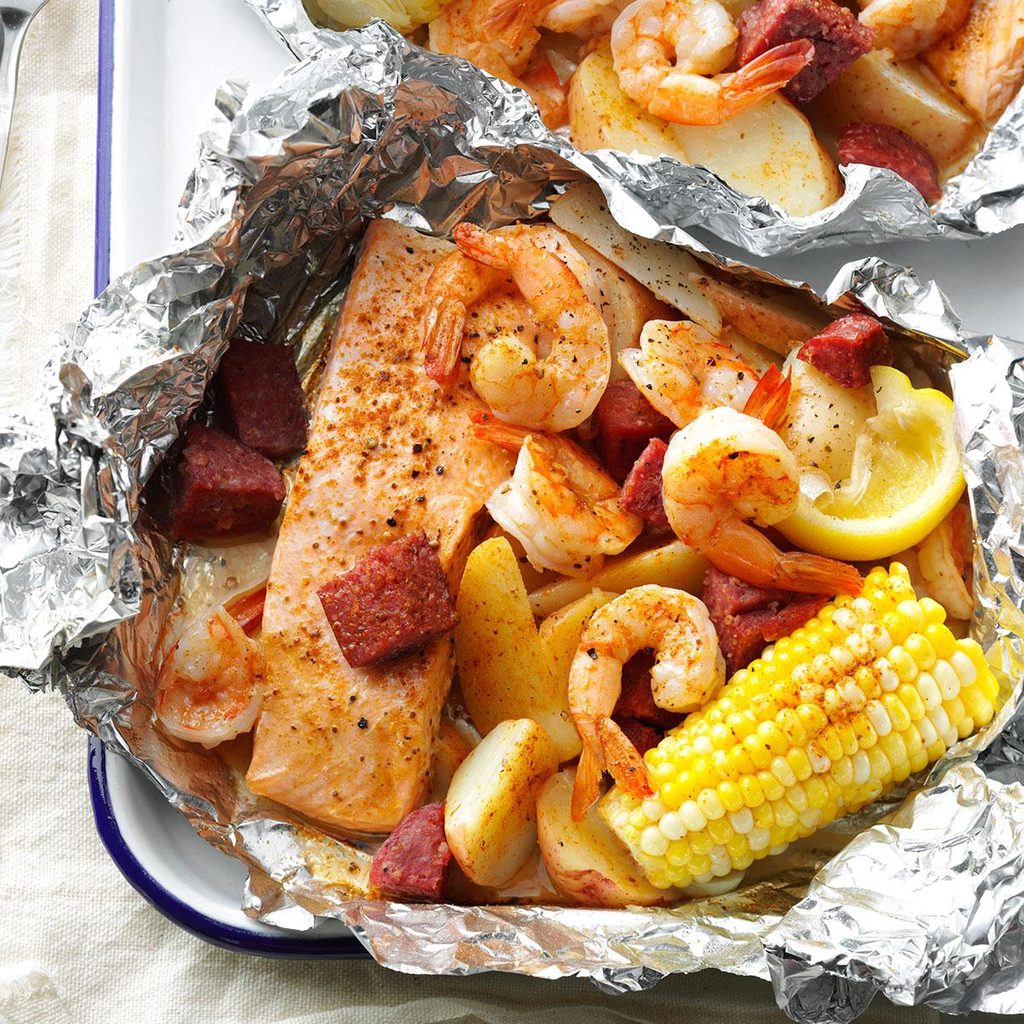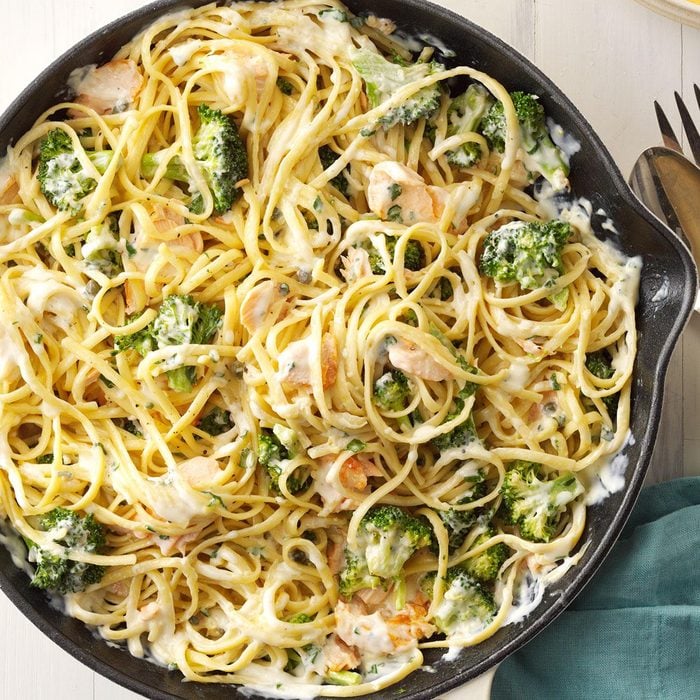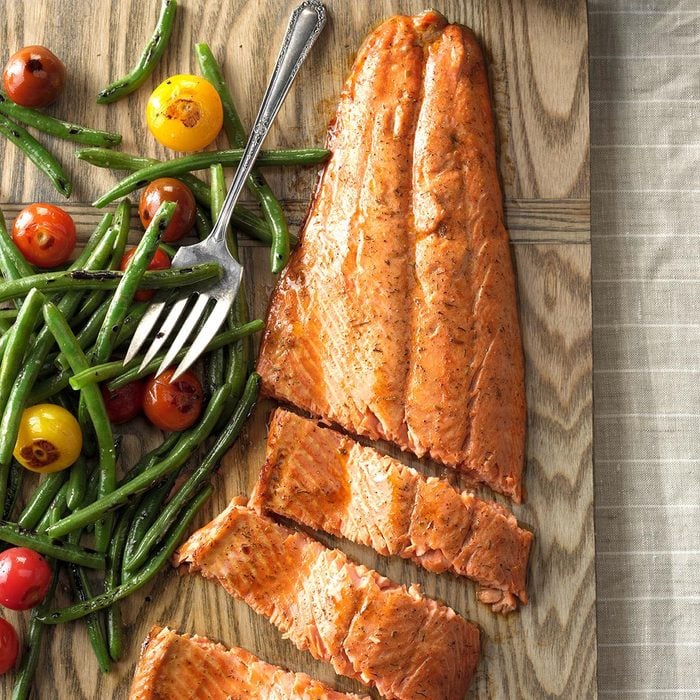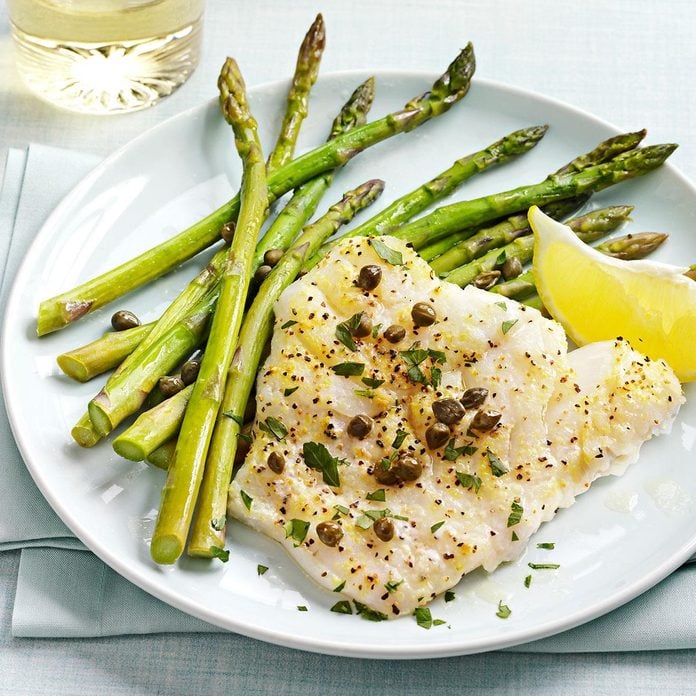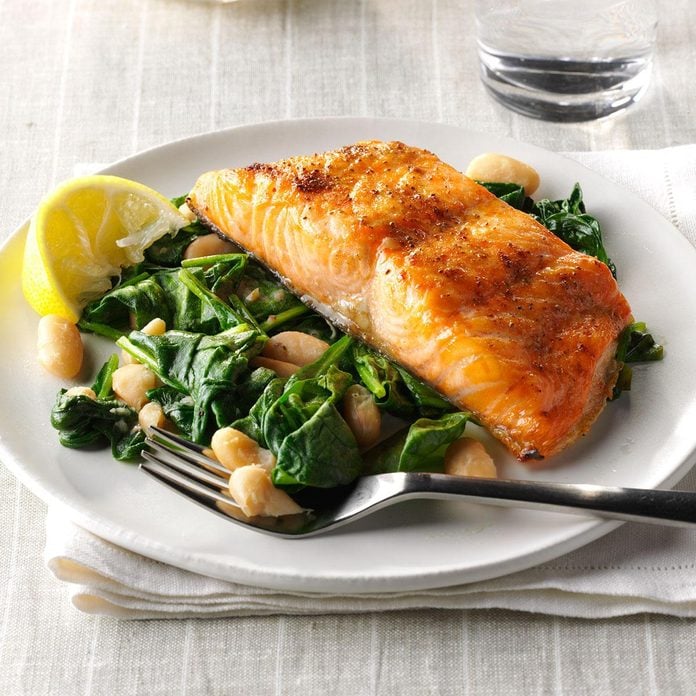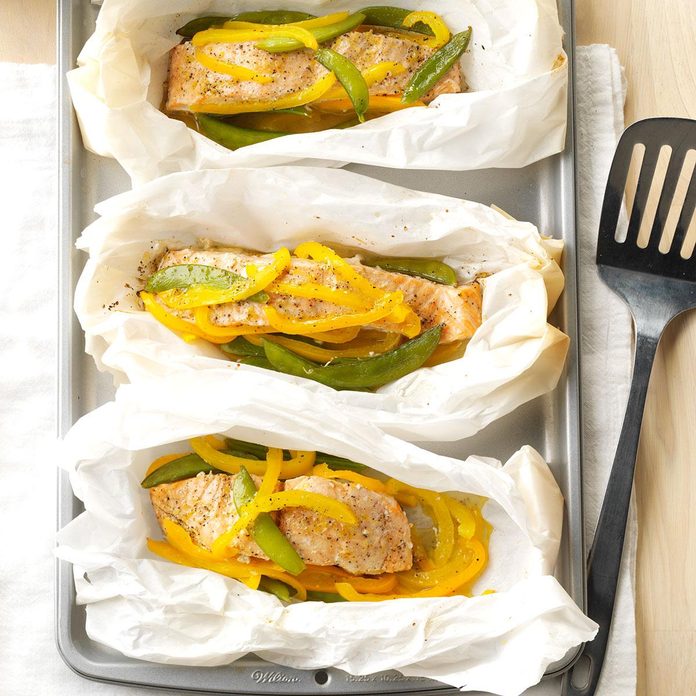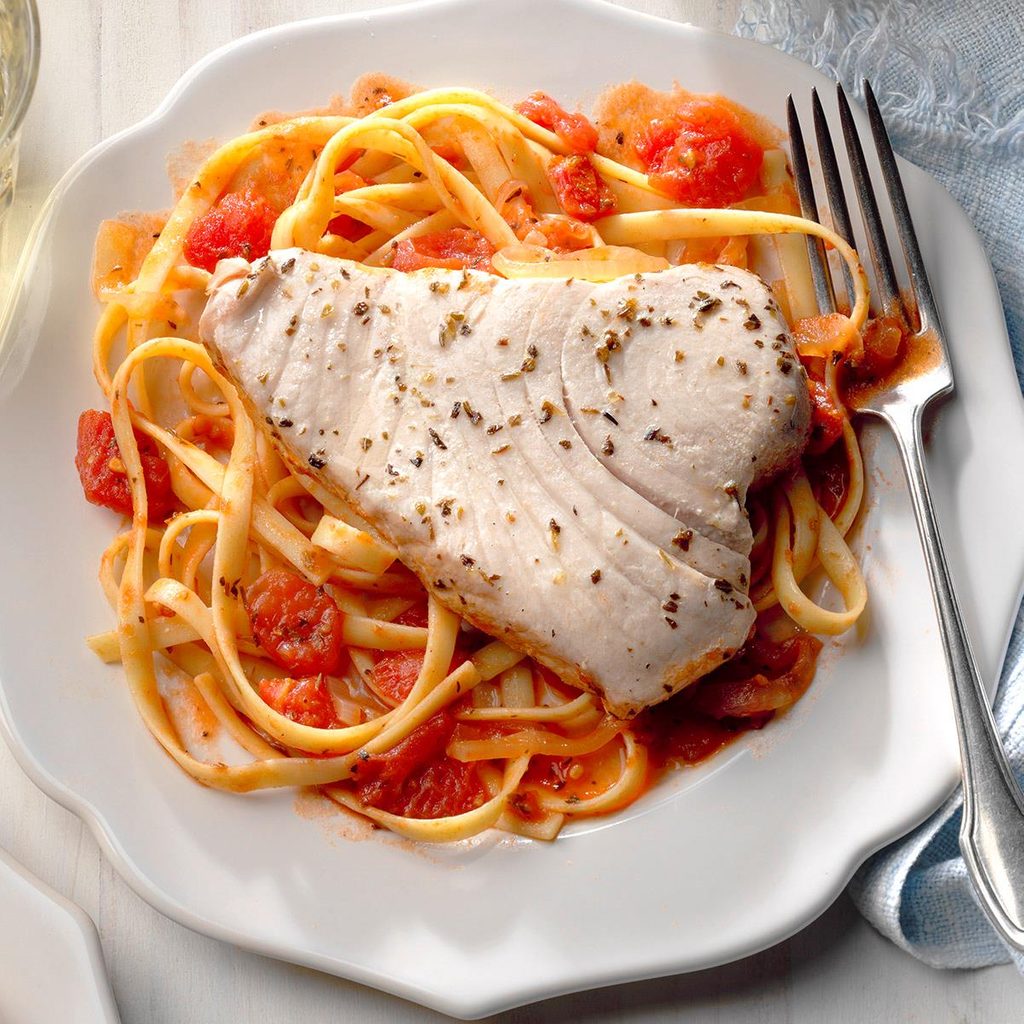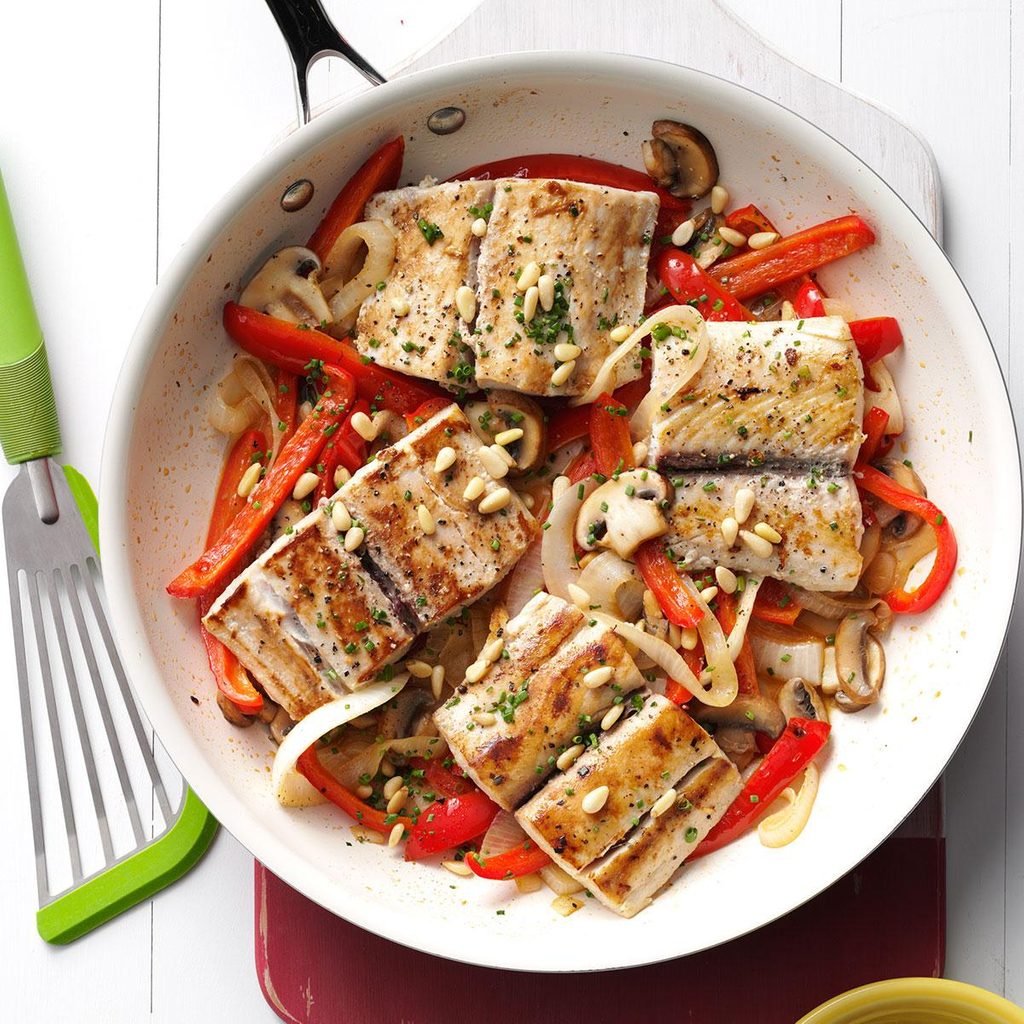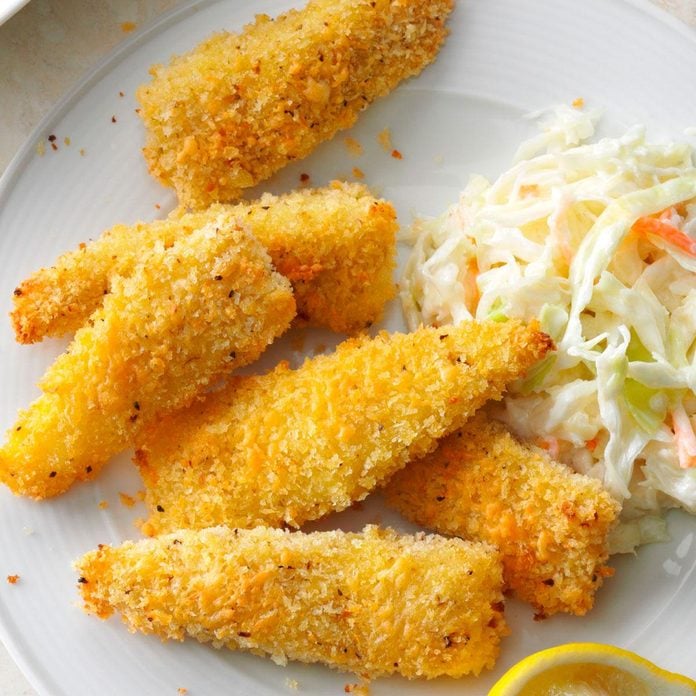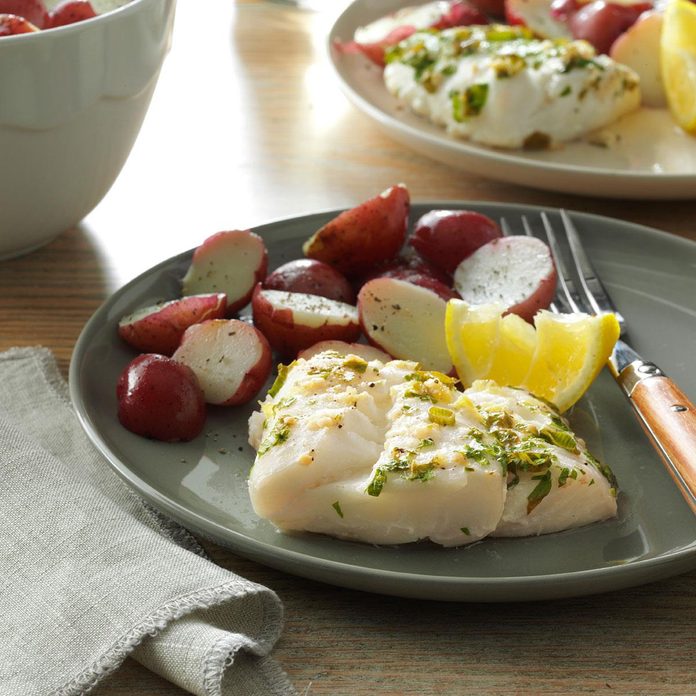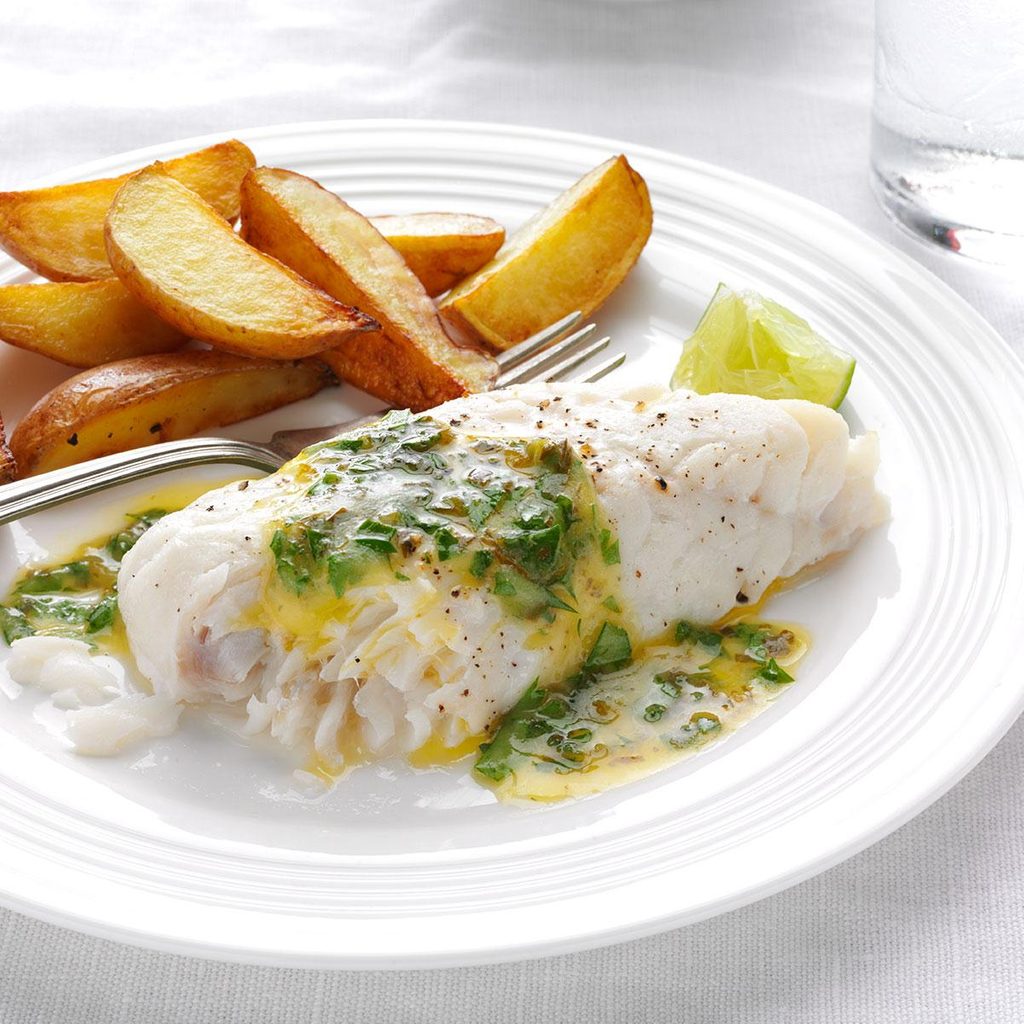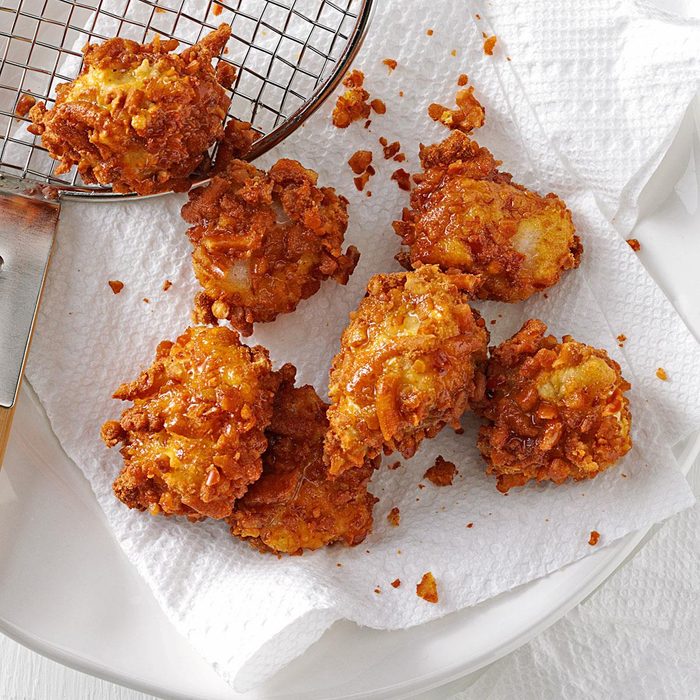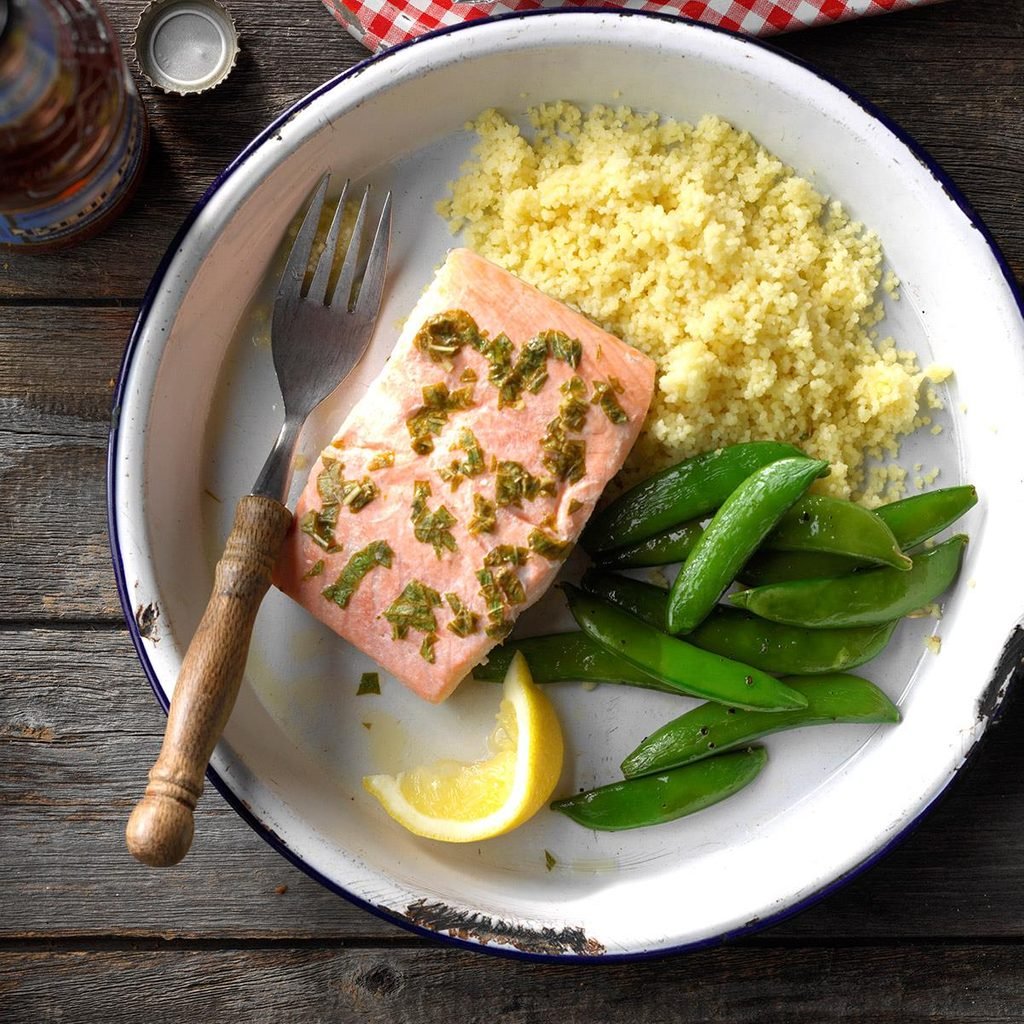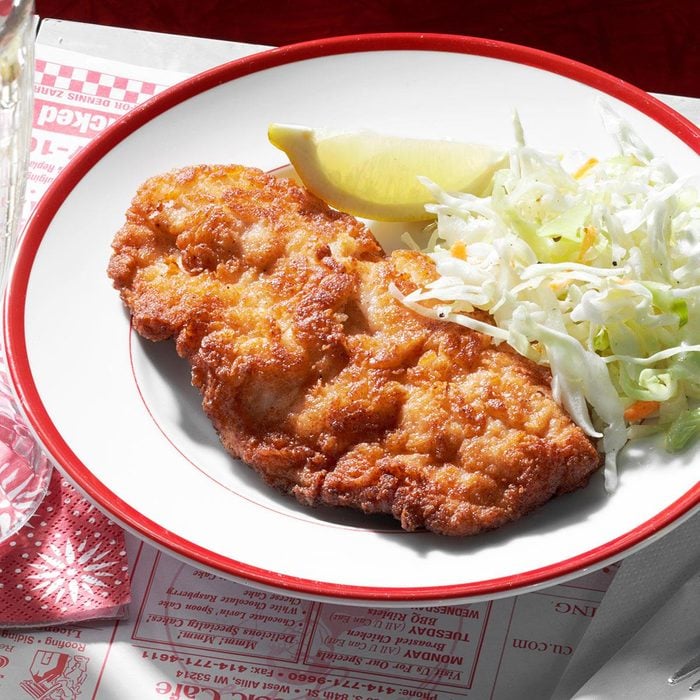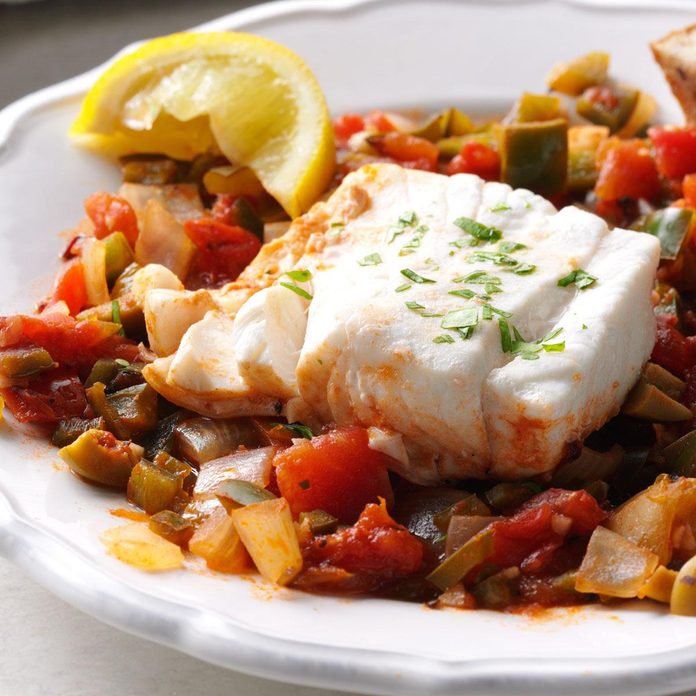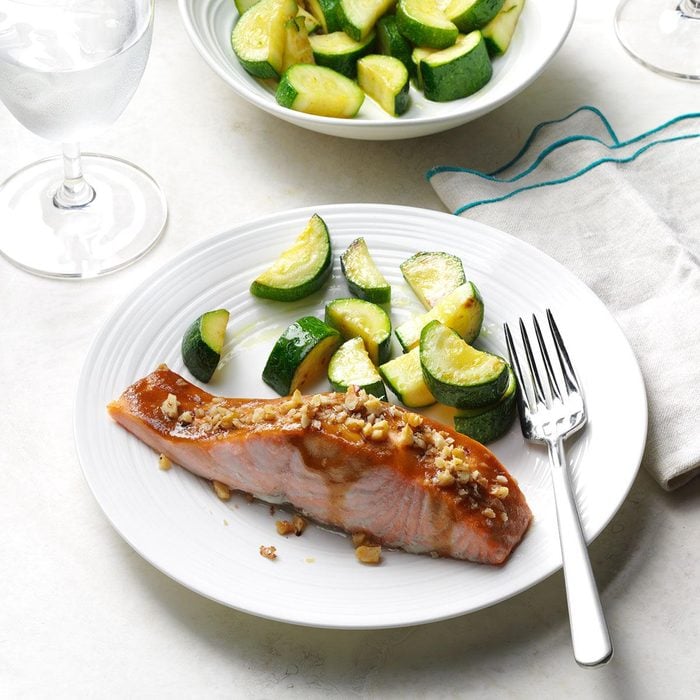Start with these quick and easy fish recipes.
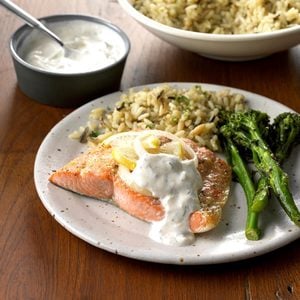 Taste of Home
Salmon with Creamy Dill Sauce
Taste of Home
Salmon with Creamy Dill Sauce
There's nothing like fresh salmon, and my mom bakes it just right so it nearly melts in your mouth. The sour cream dill sauce is subtly seasoned with horseradish so that it doesn't overpower the delicate salmon flavor. This is one of my
favorite fish recipes. —Susan Emery, Everett, Washington
Go to Recipe
Tilapia FlorentineLooking for a way to get a little more heart-healthy fish into your family's weekly diet? You'll win them over hook, line and sinker with this quick and easy entree. Topped with fresh spinach and a splash of lemon, it's sure to become a favorite!
Melanie Bachman - Ulysses, Pennsylvania
Orange Soy Salmon with RiceHave an elegant meal that looks as good as it tastes, in just 20 minutes! Tender salmon fillets take on Asian flavors with soy sauce, a hint of orange juice and a side of fluffy rice. —Jolanthe Erb, Harrisonburg, Virginia
Tilapia with Corn SalsaMy family loves fish, and this quick and tasty dish is very popular at my house. Though it tastes like it takes a long time, it cooks in minutes under the broiler. We enjoy it with lemon wedges with couscous on the side. —Brenda Coffey, Singer Island, Florida
Citrus Coconut Steamed CodI love to make this fusion meal on weeknights when I am short on time but want something big in flavor. —Roxanne Chan, Albany, California
Halibut Soft TacosI sometimes serve these halibut tacos wrapped in lettuce instead of tortillas. Either way, the mango salsa tastes amazing with grilled halibut. This warm-weather recipe is quick, colorful and full of nutrients. —Kristin Kossak, Bozeman, Montana
Easy Glazed SalmonIt takes only four ingredients and a few moments to make this delightful main dish. —Tara Ernspiker, Falling Waters, West Virginia
Baked TilapiaI've decided to cook healthier for my family, and that includes having more fish at home. After looking at easy tilapia recipes, I decided to try baked tilapia. I love that it's fast, too! —Hope Stewart, Raleigh, North Carolina
Easy Fish TacosSearching for a lighter alternative to traditional fried fish, I came up with this crispy, crunchy fish tacos recipe. It's a hit with friends and family. —Jennifer Palmer, Rancho Cucamonga, California
Tuna Crescent RingThis is really easy to throw together, and I often use it when I am too tired to fix anything else. —Julia Bivens, Martinsburg, West Virginia
Pine Nut-Crusted TilapiaThis golden-brown pine nut-crusted tilapia has a tender texture, nutty coating and hint of sweet honey. It’s fast to fix and can be served for a special family meal or when you want to impress guests. —Taste of Home Test Kitchen, Milwaukee, Wisconsin
Fast Baked FishWe always have a good supply of fresh fish, so I make
fish recipes often. This recipe is my favorite because it is moist, tender and flavorful. —Judie Anglen, Riverton, Wyoming
Speedy Salmon Stir-FrySalmon is a staple where I live, so I tried it in a stir-fry. My recipe has an orange glaze, but I like it with lime, too. —Joni Hilton, Rocklin, California
Crispy Fish & ChipsA British pub classic turns crown jewel when you add horseradish, panko and Worcestershire. You can also try it with a white fish like cod or haddock. —Linda Schend, Kenosha, Wisconsin
Blackened Tilapia with Zucchini NoodlesI love quick and bright meals like this one-skillet wonder. The way it tastes, you'd think it takes a lot more effort, but it goes from prep to dinner table in half an hour. The recipe works well with any light fish, or even shrimp. —Tammy Brownlow, Dallas, Texas
Air-Fryer Fish and ChipsLooking for easy air-fryer recipes? Try this simple air-fryer fish and chips. The fish fillets have a fuss-free coating that's healthy but just as crunchy and golden as the deep-fried kind. Simply seasoned, the crispy fries are perfect on the side. —Janice Mitchell, Aurora, Colorado
Citrus Salmon Fillets with SalsaTake lemony salmon fillets to the next level with a fresh, colorful homemade salsa. Just add a simple side of rice for a complete dinner. —Tiffany Hartpence, Lander, WY
Jamaican Salmon with Coconut Cream SauceWe try to eat salmon a lot because it's so healthy, and I love thinking of new ways to make it different and delicious. This dazzler is easy and is my go-to meal for company. —Joni Hilton, Rocklin, California
Peppered Tuna KabobsWhen we barbecue, we like to wow our guests, so dogs and burgers are out! We make tuna skewers topped with salsa—the perfect easy recipe. My five kids like to help me put them together. —Jennifer Ingersoll, Herndon, Virginia
Brown Sugar-Glazed SalmonPop these protein-packed brown sugar salmon fillets in the oven before whipping up a sweet basting sauce. This tangy entree cooks up in minutes, making it a perfect meal for busy families and unexpected weekend guests. —Debra Martin, Belleville, Michigan
Crunchy Oven-Baked TilapiaThis baked tilapia is perfectly crunchy. Dip it in the fresh lime mayo for a burst of bright citrus flavor. —Leslie Palmer, Swampscott, Massachusetts
Blackened Catfish with Mango Avocado SalsaA delightful and tasty rub makes this quick recipe fantastic. While the fish is sitting to allow the flavors to blend, you can easily assemble the salsa. My family loves this! —Laura Fisher, Westfield, Massachusetts
Southwestern Fish TacosThese bright tacos take me on an instant trip to sunny Southern California. The recipe has been on my family's most requested list for years. —Joan Hallford, North Richland Hills, Texas
Savory Tomato-Braised TilapiaI shared this recipe with my bunco group and now one of my friends makes it all the time. I think that's the perfect testament to just how good this dish is. —Nancy Shively, Shorewood, Illinois
Salmon with Mango-Citrus SalsaMy mother would make this for us on weeknights in summer—this was the only way we would eat fish. You can make the salsa a day ahead of time. Just keep it in the refrigerator in a covered container until ready to use. —Najmussahar Ahmed, Canton, Michigan. All fried fish needs
a good side dish. We've curated a list of the best
sides for fried fish.
Lime-Cilantro TilapiaI have so much fun serving this Mexican-inspired tilapia at summer parties. Finish it off with a side of rice and a salad loaded with sliced avocadoes and tomatoes. —Nadine Mesch, Mount Healthy, Ohio
Cajun Boil on the GrillI came up with these everything-in-one seafood packets for a family reunion, since the recipe can be increased to feed a bunch. The foil steams up inside, so open carefully. —Allison Brooks, Fort Collins, Colorado
Creamy Salmon LinguineExtra Pesto Grilled Salmon gives this creamy pasta toss a luxurious taste and texture. We love it as is, but you could easily sub in any veggies you have on hand for the broccoli. —Jacob Kitzman, Seattle, Washington
Spiced SalmonThis delicious, moist fish is very quick and easy to prepare. It gets a little sweetness from brown sugar, but overall the seasonings are mild and give this dish broad appeal. It's a wonderful way to enjoy healthy salmon.—Donna Reynolds, Innisfail, Alberta
Baked Cod Piccata with AsparagusIt takes longer for the oven to preheat than it does to prepare this delicious, good-for-you dish. While it’s baking, I throw together a quick salad. —Barbara Lento, Houston, Pennsylvania
Salmon with Spinach & White BeansMy husband, Oscar, is a Southerner at heart. This salmon with garlicky beans and spinach won him over at first bite. —Mary Ellen Hofstetter, Brentwood, Tennessee
Salmon Veggie PacketsI feel the spirit of Julia Child when I make lemon-pepper salmon en papillote (in parchment). It’s the first French recipe I learned, and the delightful little packages are family-friendly. —Renee Greene, New York, NY
Tuna Steak on FettuccineFor something new to do with tuna, I suggest this tangy dish. Although I prefer the marinade on tuna or mahi mahi, it's scrumptious on any fish, grilled, baked or broiled. —Caren Stearns, Austin, Texas
Ginger Halibut with Brussels SproutsI moved to the United States from Russia and love cooking Russian food for family and friends. Halibut with soy sauce, ginger and pepper is a favorite. —Margarita Parker, New Bern, North Carolina
Smoked Salmon Quesadillas with Creamy Chipotle SauceThese extra-special quesadillas take just minutes to make, but you'll want to savor them for as long as possible. Sprinkle the cheesy wedges with chopped fresh cilantro. —Daniel Shemtob, Irvine, California
Mahi Mahi & Veggie SkilletCooking mahi mahi with a mix of vegetables may seem complex, but I developed this skillet recipe to bring out the wow factor without the hassle and fuss. —Solomon Wang, Arlington, Texas
Parmesan Fish SticksI wanted a healthier approach to fish sticks and developed a baked tilapia with a slightly peppery bite. My husband and sons love the crispy coating. —Candy Summerhill, Alexander, Arkansas
Lemony Parsley Baked CodThe trick to avoid overcooking a good piece of fish is to cook it at a high temperature for a short amount of time. Do that and the fish stays moist and tender. —Sherry Day, Pinckney, Michigan
Haddock with Lime-Cilantro ButterHere in Louisiana, the good times roll when we broil fish and serve it with lots of lime juice, cilantro and butter. —Darlene Morris, Franklinton, Louisiana
Pretzel-Crusted Catfish BitesI'm not a big fish lover, so any concoction that has me loving fish is a keeper in my book. This combination of flavors just works for me. It's wonderful served with a nice buttery herb rice pilaf and corn muffins with honey! —Kelly Williams, Forked River, New Jersey. Here are a few tips for making
fried catfish.
Lemon Basil SalmonMy husband came up with this easy, foil-packet recipe for flaky, fork-tender salmon. This recipe is a winner. —Marianne Bauman Modesto, CA
Secret Ingredient Fried CatfishPancake mix and carbonated water are the surprising secrets to these beautifully browned catfish fillets. Serve with coleslaw or sweet potato fries, and get ready for smiles. —Taste of Home Test Kitchen
Tomato-Poached HalibutMy halibut with a burst of lemon comes together in one pan and stays super moist. Try it with polenta, angel hair pasta or crusty bread. —Danna Rogers, Westport, Connecticut
Walnut-Crusted Ginger SalmonFor those who aren’t wild about fish, this gingery salmon is a game-changer. Baking on foil makes for extra-easy cleanup. —Becky Walch, Orland, California
